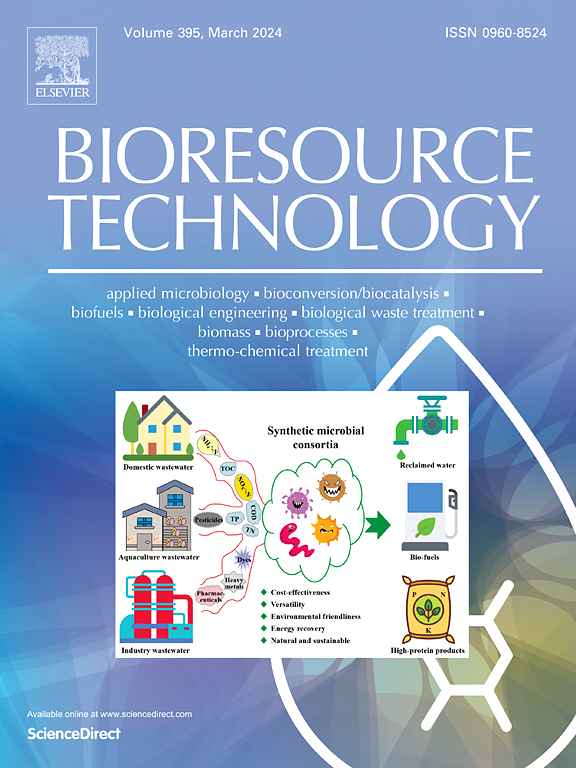Enhanced autotrophic denitrification under salinity stress by bioaugmentation of Sulfurimonas: performance evaluation, microbial community and response mechanisms
IF 9.7
1区 环境科学与生态学
Q1 AGRICULTURAL ENGINEERING
引用次数: 0
Abstract
Sulfur autotrophic denitrification (SADN) is a promising nitrogen removal process for industrial wastewater treatment, but elevated salinity is a common inhibitory factor that affects SADN performance. In this study, the sequencing batch biofilm reactor (SBBR) was enhanced with isolated salt-tolerant Sulfurimonas strains. Results showed that bioaugmentation improved the reactor’s denitrification efficiency from 70.21 % to 98.79 %. As salinity increased from 1 % to 4 %, nitrogen removal efficiency experienced short fluctuations and quickly stabilized above 98.50 %. The abundance of Sulfurimonas increased from 13.06 % to 26.14 % with increasing salinity, becoming the most dominant taxon at high salinity. This genus maintained the highest abundance during sulfur disproportionation within the entire reactor. Network analysis indicated that Sulfurimonas primarily exhibited competitive relationships with other microbial groups. Additionally, there was a notable increase in gene abundance associated with denitrification and dissimilatory nitrate reduction. Overall, this study offers an efficient alternative method for nitrate removal in carbon-limited, high-salinity wastewater.

盐胁迫下硫单胞菌生物强化自养反硝化:性能评价、微生物群落及响应机制
硫自养反硝化(SADN)是一种很有前途的工业废水脱氮工艺,但盐度升高是影响SADN脱氮性能的常见抑制因素。本研究利用分离的耐盐硫单胞菌对SBBR生物膜反应器进行了强化。结果表明,生物强化使反应器的反硝化效率由70.21 %提高到98.79 %。当矿化度从1 %增加到4 %时,脱氮效率经历了短暂波动,并迅速稳定在98.50 %以上。随着盐度的增加,硫单胞菌的丰度从13.06 %增加到26.14 %,成为高盐度的最优势分类群。该属在整个反应器内硫歧化过程中保持最高的丰度。网络分析表明,硫单胞菌主要表现为与其他微生物群的竞争关系。此外,与反硝化和异化还原硝酸盐相关的基因丰度显著增加。总的来说,本研究提供了一种有效的替代方法来去除碳限制的高盐度废水中的硝酸盐。
本文章由计算机程序翻译,如有差异,请以英文原文为准。
求助全文
约1分钟内获得全文
求助全文
来源期刊

Bioresource Technology
工程技术-能源与燃料
CiteScore
20.80
自引率
19.30%
发文量
2013
审稿时长
12 days
期刊介绍:
Bioresource Technology publishes original articles, review articles, case studies, and short communications covering the fundamentals, applications, and management of bioresource technology. The journal seeks to advance and disseminate knowledge across various areas related to biomass, biological waste treatment, bioenergy, biotransformations, bioresource systems analysis, and associated conversion or production technologies.
Topics include:
• Biofuels: liquid and gaseous biofuels production, modeling and economics
• Bioprocesses and bioproducts: biocatalysis and fermentations
• Biomass and feedstocks utilization: bioconversion of agro-industrial residues
• Environmental protection: biological waste treatment
• Thermochemical conversion of biomass: combustion, pyrolysis, gasification, catalysis.
 求助内容:
求助内容: 应助结果提醒方式:
应助结果提醒方式:


